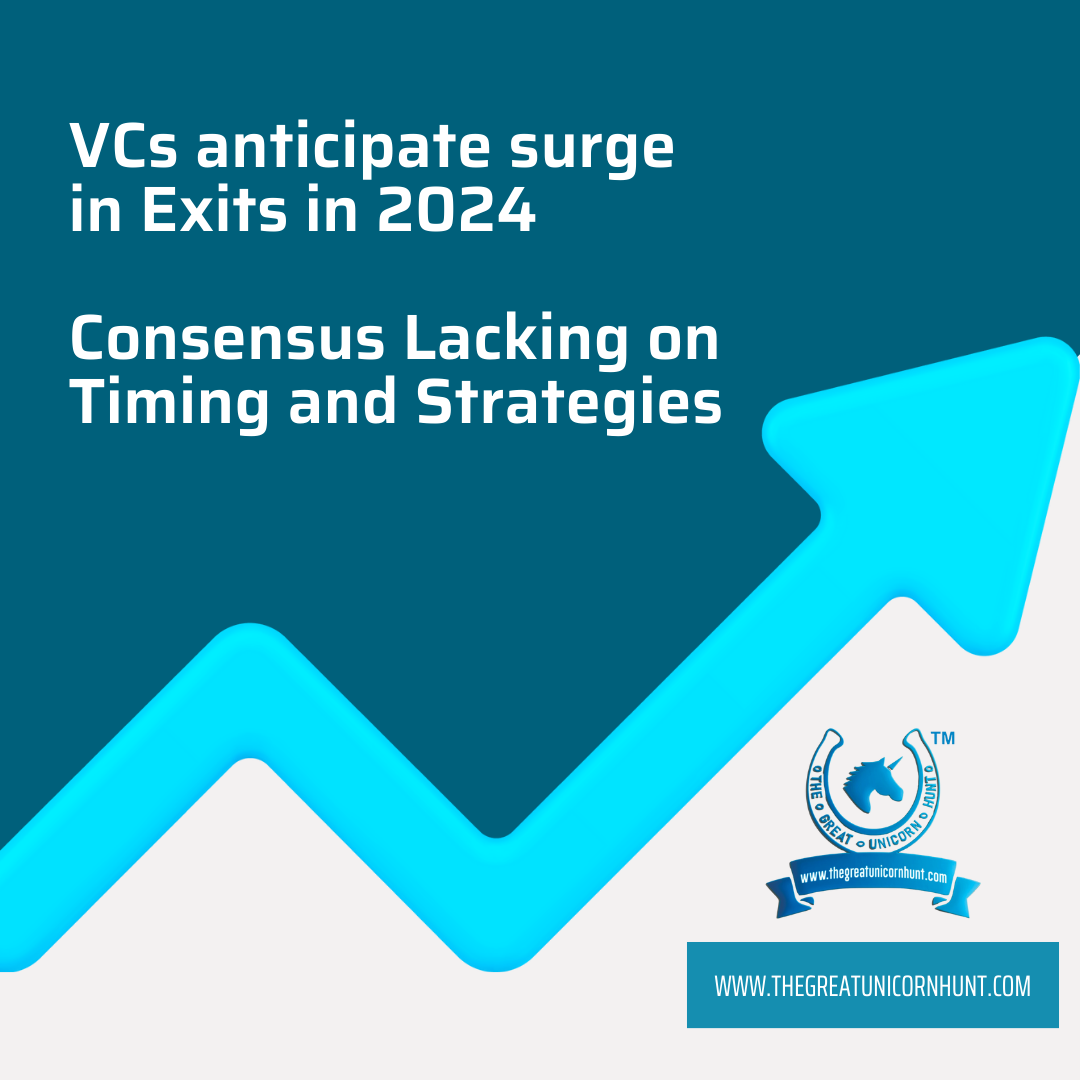
In our Endeavor to share knowledge from across the world, here is another intriguing article titled 'VCs anticipate surge in Exits in 2024: Consensus Lacking on Timing and Strategies' on the TechCrunch website https://techcrunch.com/2024/01/04/vcs-predict-more-exits-in-2024/ . Wondering what's in store for startup exits in 2024? Will it be the year the market defrosts? TechCrunch+ surveyed over 40 investors for their insights. While most foresee a rise in exit volume, opinions differ on M&A vs. IPOs. Some predict a surge in M&A fuelled by strong business fundamentals, while others anticipate the return of IPOs, albeit with varied timelines. Dive into the forecast and potential factors influencing the exit landscape ahead.
The past few years have posed challenges for Startups eyeing exits, but the reality is, companies, particularly those in later stages, can't indefinitely remain private. Despite hopes for a thawing of the exit market in 2023 following a quiet 2022, the anticipated shift didn't materialize. Nevertheless, investors and founders pinned their hopes on 2024 as the year when the exit market would come alive. Now that 2024 has arrived, are those hopes still intact?
In a recent survey by TechCrunch+, more than 40 investors weighed in on various aspects expected in 2024, including their outlook on the exit market. The consensus among most investors is that exit volumes will surpass those of 2023 and 2022, but opinions diverge on the nature of these exits.
Some investors are upbeat about an uptick in mergers and acquisitions (M&A) activity in 2024. They point to the increased emphasis on robust business fundamentals and economics within the startup landscape, resulting in several startups boasting solid growth trajectories and positive cash flows. According to Don Butler, Managing Director of Thomvest Ventures, these factors will present enticing targets for strategic acquirers. Furthermore, well-capitalized entities such as public companies, legacy corporations, and private equity firms are poised to pursue acquisitions, seeking smaller startups as potential bolt-on or tuck-in additions to their portfolios.
On the other hand, some investors anticipate a resurgence in initial public offerings (IPOs). While not expecting IPO levels akin to 2020 or 2021, there's optimism about a gradual return to regularity in 2024. However, opinions vary on the timing and scale of this resurgence. While some foresee a handful of IPOs early in the year paving the way for a more stable stream later on, others anticipate a stronger pipeline in the latter half of 2024. Nevertheless, uncertainties linger, with predictions ranging from a full-fledged IPO revival by late 2024 to a gradual transition extending into 2025.
Several factors could influence the timing and nature of exit activity in 2024. Fluctuations in interest rates, with expectations of the U.S. Federal Reserve trimming rates after years of hikes, could impact market dynamics. A potential rate cut might reduce capital costs, alleviating some market constraints and bolstering stock market performance, potentially benefiting IPOs. However, 2024 being an election year in the United States adds another layer of uncertainty. Geopolitical forces, including ongoing conflicts and supply chain disruptions, coupled with the unpredictability of an election year, could sway market stability, affecting the viability of IPOs.
Considering the potential exit environment in 2024, while liquidity remains favorable, exits might not always occur under ideal circumstances. Some exits could be prompted by necessity rather than choice, possibly resulting in lower-than-expected valuations. Despite this uncertainty, investor sentiment leans towards a more active exit market in 2024 compared to the previous year.
In summary, 2024 holds promise for a revival in exit activity, with expectations of increased M&A transactions and a gradual return of IPOs. The market's trajectory, however, remains subject to various economic and geopolitical factors, making predictions challenging but cautiously optimistic.


 Login
Login Sign-up
Sign-up